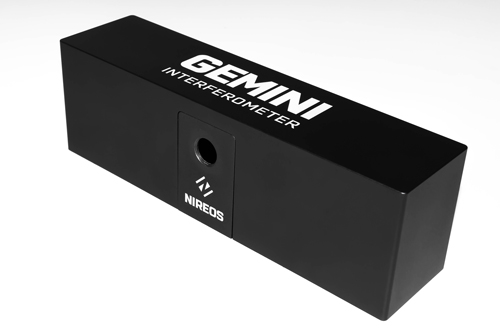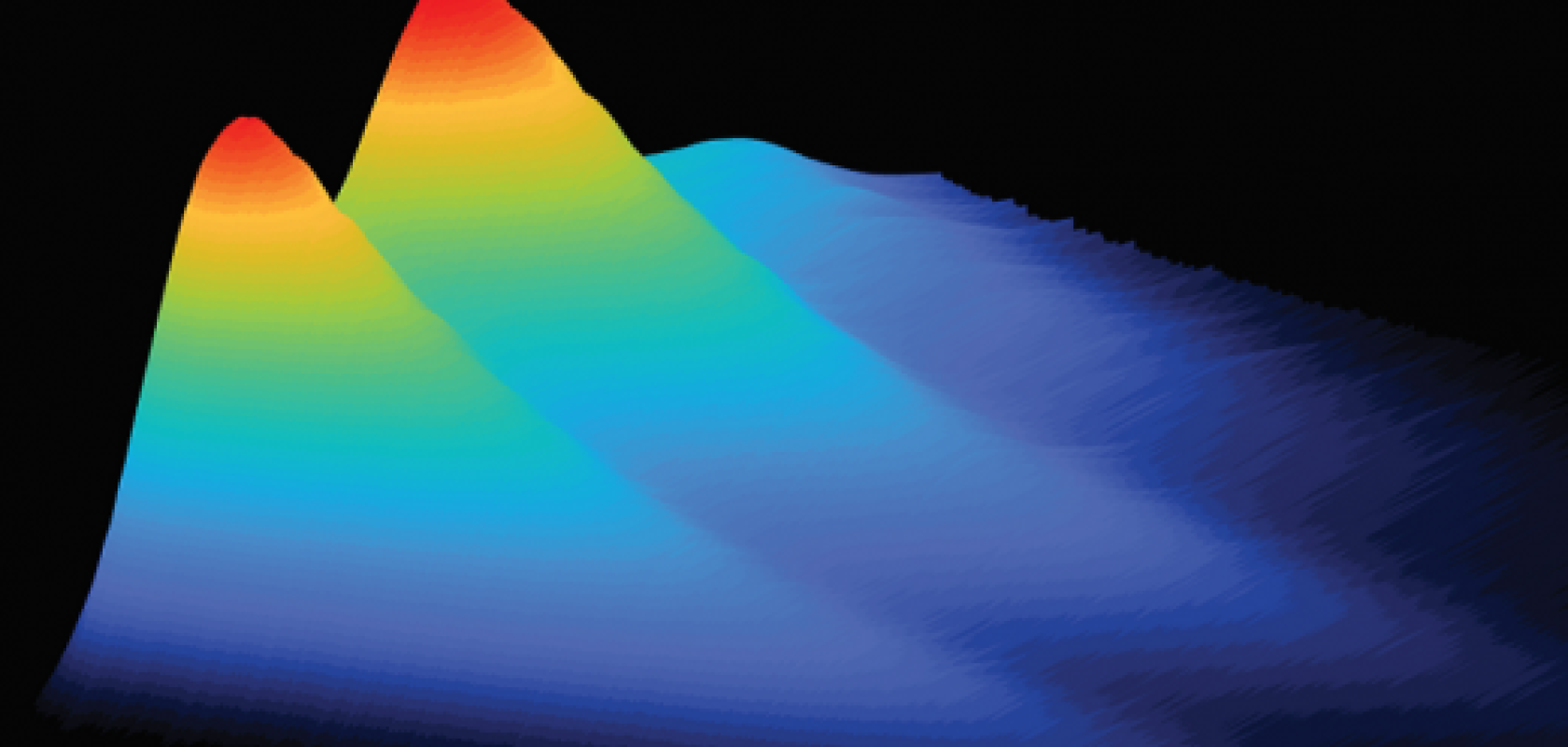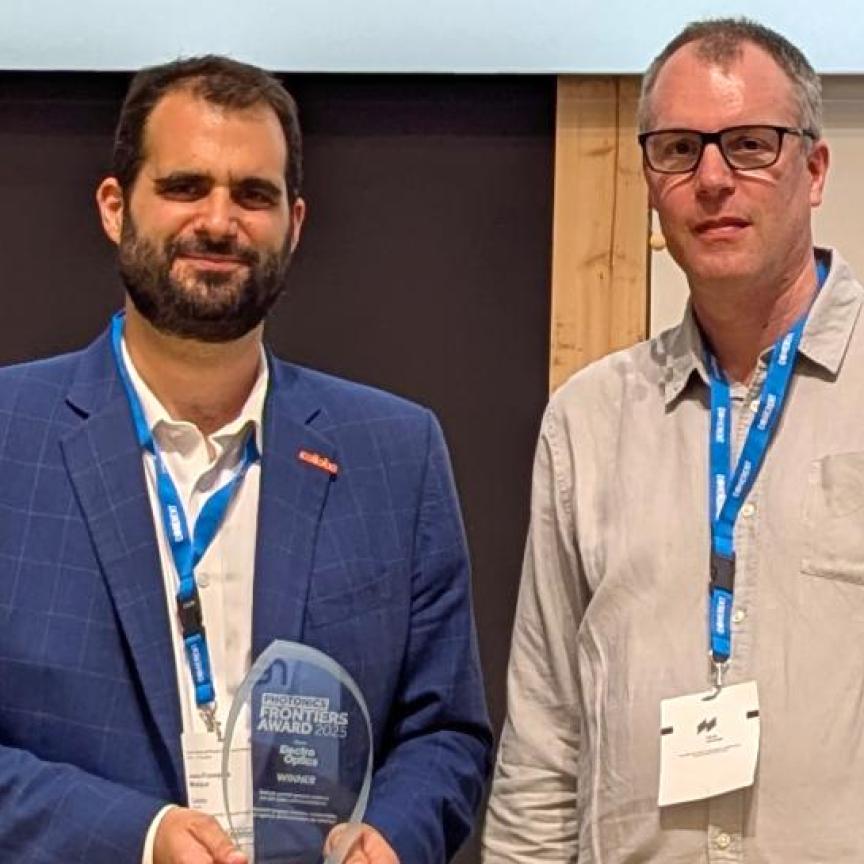Gemma Church finds out more about the Gemini interferometer from Nireos and its new uses
Spectroscopy is commonly used to identify materials by measuring the colours of light that have interacted with a sample. But there’s still plenty of room for improvement in this established field.
The Gemini interferometer from Nireos is one example. It’s highly versatile and can be added to any optical setup, and used with a range of light sources. Fabrizio Preda, CEO at Nireos, said: ‘Gemini is a tool that enables the measurements of the spectrum of any kind of light, either a coherent light source, such as a laser, or an incoherent source, such as a lamp, or a fluorescence signal emitted by a sample.’
That’s not all. Gemini is compact and lightweight, providing broad spectral coverage from 400 to 2,300nm (with an ultra-broadband option of coverage from 250 to 3,500nm) across continuous spectra. It’s compact, light and robust. Thanks to the 10mm clear aperture and the absence of entrance slits or gratings, it provides a high throughput, unaffected when the spectral resolution is changed via the system’s software by varying the maximum scan delay.
We’ll look at each of those benefits. First, the technology behind the Gemini interferometer. This is based on Fourier transform (FT) spectroscopy, which uses the interference of light, rather than dispersion, to measure spectra. Using FT spectroscopy, light is split into two collinear time-delayed replicas, whose interference pattern is measured by a detector as a function of their delay. The FT of the resulting interferogram yields the continuous-intensity spectrum of the waveform.
‘While common interferometers (such as Michelson or Mach-Zehnder interferometers) are typically limited to the IR range, Gemini also provides ultra-broadband spectral coverage and can deliver all the benefits of FT spectroscopy across the spectrum, down to the ultraviolet spectral region. For example, I am referring to the well-known multiplex or Fellgett’s advantage, the étendue or Jacquinot’s advantage, and high wavelength accuracy or Connes’ advantage,’ Preda added.
In fact, thanks to Nireos’ patented common-path geometry, Gemini is insensitive to external vibrations. It can guarantee extremely high delay reproducibility and stability of better than one attosecond, which is around a thousand times smaller than the optical cycle of visible radiation.
FT spectrometers have many prominent benefits over those instruments that rely on dispersion. ‘The typical way to operate with gratings-based devices is to focus the light on the small entrance slit, and then collimate the light coming out of the device. This can be extremely difficult, especially with incoherent light beams, such as fluorescence,’ Preda explained.
‘Instead, with the Gemini, a collimated beam is used. The light coming in is the light coming out. You have no spatial distortion to the beam, and it is very easy to focus the light, even on the small active areas of single photon avalanche diode (Spad) detectors. This is a great practical advantage,’ he said.
The Gemini interferometer also provides many benefits when compared with monochromators. Preda explained: ‘It overcomes the main drawbacks of monochromators, in terms of footprint, low throughput, fixed spectral resolution and limited spectral coverage.’
Finally, Gemini is very easy to set-up and use. Preda explained: ‘It’s a portable, plug-and-play device. The user just needs to position the interferometer in the beam path, between sample and detector (or between light source and sample, depending on application). Due to its compactness, it’s simple for users to integrate into existing systems without any technical difficulties.’
Nireos can also provide plug and play software, allowing the user to easily control the device, acquire data and retrieve the calibrated spectrum of light. ‘So, the user has a tool which is plug-and-play from a hardware and software perspective,’ Preda said.
Growing applications
Nireos has been in business since 2018 and its founders are former researchers, specialising in ultrafast spectroscopy.
‘The company started off as a spin-out from the Politecnico di Milano, and Gemini (also known as the Twins interferometer in previous scientific publications) is the core technology on which our other products are based,’ Preda said. ‘Back then, it was a natural first step for us to start by working in the world of academia.’
Gemini is now used in a wealth of scientific research applications, including measuring static or time-resolved fluorescence spectra, for broadband pump-probe or coherent Raman spectroscopy, and quantum optics.
Nireos is also expanding into the industrial market, recently introducing a hyperspectral camera, Hera, to its product range, and with plans to launch an ultra-broadband spectrometer, Spectre. Preda explained: ‘As we continue to focus on the world of academia, these new products also open up our expertise to industrial applications, such as quality control, for example.’
One common research application, time and frequency resolved fluorescence, highlights how Gemini can be used and why it’s different from other devices on the market.
In this application, the Gemini interferometer is placed between the sample and detector, which is usually a Spad or photomultiplier tube. The Gemini is factory-calibrated and aligned for turn-key integration in any existing setup. So, the user doesn’t have to worry about any complicated optical alignment procedures.
A pulsed laser then excites the fluorescent sample. The signal is sent through the Gemini interferometer and measured by the Spad, which is connected to a time-correlated single photon counting (TCSPC) system. While Gemini provides the spectral resolution, the TCSPC provides the temporal resolution.
Using this technique, 2D maps of the sample’s fluorescence are produced as a function of the emission wavelength and decay time, with high temporal and spectral resolution. This is just one example of how Gemini can be incorporated and used in an existing optical setup.
In its latest white paper, Nireos reveals how the Gemini provides an innovative approach also to broadband pump-probe spectroscopy, using a single-pixel detector and single channel lock-in amplifier. ‘Pump-probe signals are typically very small and lie on a large background, so they require modulation transfer techniques, which consist of modulating the pump beam and synchronously demodulating the probe to detect the pump-induced transmission changes,’ Preda explained.
‘In the kHz regime, parallel detection systems based on dispersive techniques are straightforward to implement, as these devices are capable of single-shot detection at these frequencies.’
However, as the sensitivity of pump-probe depends on the repetition rate of the system, the desire would be to exploit the higher repetition rates of MHz lasers. In this range, no dispersive devices capable of single-shot detection exist, so the serial approach is typically used measuring pump-probe signals at individual probe wavelengths, selected by an interference filter or a monochromator.
A parallel approach would be preferable, as it greatly reduces the measurement time, and it minimises distortions in the retrieved spectra that could arise from slow drifts in the pump power, gradual sample damage or gradual misalignment of the detection chain or the spatial overlap of the two pulses.
‘With Gemini, we introduce a new and highly-versatile approach to broadband pump-probe spectroscopy, as it combines broad spectral coverage, parallel acquisition, and high sensitivity,’ Preda said. ‘It can be used in almost all the spectroscopy experiments out there, whether that’s linear spectroscopy such as fluorescence, but also in non-linear spectroscopy, such as pump-probe or coherent Raman experiments.’
To find out more on this topic click here.

The Gemini interferometer


